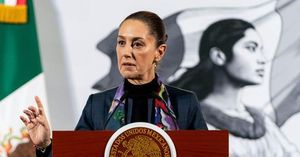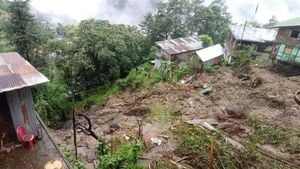The Indian textile industry, valued at approximately $140-145 billion, is under increasing pressure as it prepares for the Union Budget 2025. While the upcoming budget is anticipated to introduce measures to stimulate growth and competitiveness, the challenges faced by the sector remain substantial, particularly with the global pivot toward man-made fibers (MMF).
Industry leaders are calling for the government to address raw material pricing and to abolish certain tariffs. The textile body has reported significant discrepancies between domestic raw material prices and international rates, claiming they are considerably higher due to restrictions like Quality Control Orders (QCOs) on MMF fiber and yarn.
Competitors such as Bangladesh and Vietnam enjoy free access to raw materials, positioning them favorably against Indian manufacturers. This non-tariff barrier is exacerbated by import duties on cotton, which Indian textile producers argue are hindering the domestic market's competitiveness. According to the Indian Textile and Apparel Industry's pre-budget memorandum, removing these duties is imperative for fostering growth.
The industry contends these import duties, originally instituted to protect local farmers, have instead become detrimental, especially as India has been importing specialty cotton varieties not obtainable domestically. The Economic Survey suggests recent amendments are needed to support the industry’s transition from traditional cotton production to include MMF, which accounted for 77% of global fiber consumption as of 2024.
The Economic Survey 2024-25 revealed India's MMF production share is only 9.2%, far behind global leaders like Vietnam, China, and Taiwan. The survey emphasizes the urgent need for the Indian textile sector to realign its focus to adapt to changing global demands, particularly as MMF consumption continues to rise.
Understanding this shift is important, especially as India exports textile products predominantly made from cotton. Eight out of the top ten textile exports are cotton or cotton-based. Yet, the global market is swiftly moving toward diversified MMF offerings, which include products like athleisure wear and technical textiles utilized across sectors such as aviation and automobiles.
“India's reliance on cotton, unlike the global shift toward MMF, limits its competitiveness in the worldwide market,” the Economic Survey states, stressing the importance of investing significantly in MMF production capabilities along with vertical integration of the supply chain.
Logistical challenges also pose hurdles for Indian producers. For example, raw cotton is primarily produced in Gujarat, Madhya Pradesh, and Andhra Pradesh but needs to be transported to Tamil Nadu for processing, only to return to Gujarat and Maharashtra for weaving. This complexity inflates costs compared to competitors such as China and Vietnam, who operate under more streamlined and integrated systems.
The industry is also eager for enhancements to the PLI scheme, which is expected to receive increased budgetary allocations for FY26. The current funding under PLI has been underutilized, with less than 10% of the Rs 1.97 lakh crore allocated since its inception used by the end of CY24. The anticipation is for the government to adapt this scheme to provide broader coverage and more support across diverse textile sectors, beyond just synthetics.
Factors such as the current costs of polyester and viscose staple fiber face scrutiny, with industry advocates urging the government to cut tariffs to stimulate competitiveness. The import duty is said to range between 11-27%, starkly contrasting with Bangladesh's negligible tariffs. With cheaper imported synthetic fabrics flooding the market through misdeclarations, reconsideration of duties on all textile inputs is becoming increasingly urgent.
Echoing these sentiments, industry experts highlight the necessity of returning to direct benefit programs for farmers and establishing schemes to stabilize cotton prices effectively. Suggestions include implementing direct benefit transfers for cotton procurement and enhancing credit accessibility for textile operations.
Dive-in discussions also reveal acute concerns about skill shortages hindering productivity and innovation within the Indian textile sector, thereby limiting its ability to capitalize on potential opportunities. The Economic Survey illuminated the skill gap as one of the sector's most pressing challenges, fueling the argument for developing educational and vocational programs to uplift the textile workforce.
With textiles being one of the largest employment generators, primarily for women and rural populations, its impact on overall economic health cannot be understated. The sector contributes roughly 2.3% to India’s GDP and 12% to its export basket, holding promise for significant employment opportunities for millions.
Worthy of mention is the performance of India’s technical textiles industry, which ranks fifth globally, boasting exports valued at $2.58 billion for FY24. The government has initiated programs aimed at bolstering this segment, with the market expected to grow significantly, leveraging the advantages brought forth by PLI schemes.
The sector must also know the value of reforming its cumbersome regulatory processes. Current practices, which complicate export logistics, such as exacting detailed accounts for every square centimeter of fabric and requiring pre-shipment inspection certificates, must be streamlined to ease operational burdens.
Looking forward, the textile industry stands at the precipice of significant transformation opportunities, contingent upon how well India can adapt its strategies to align with global market demands. The government's timely interventions and the willingness of industry stakeholders to innovate will dictate the future competitiveness of India's textile sector.



